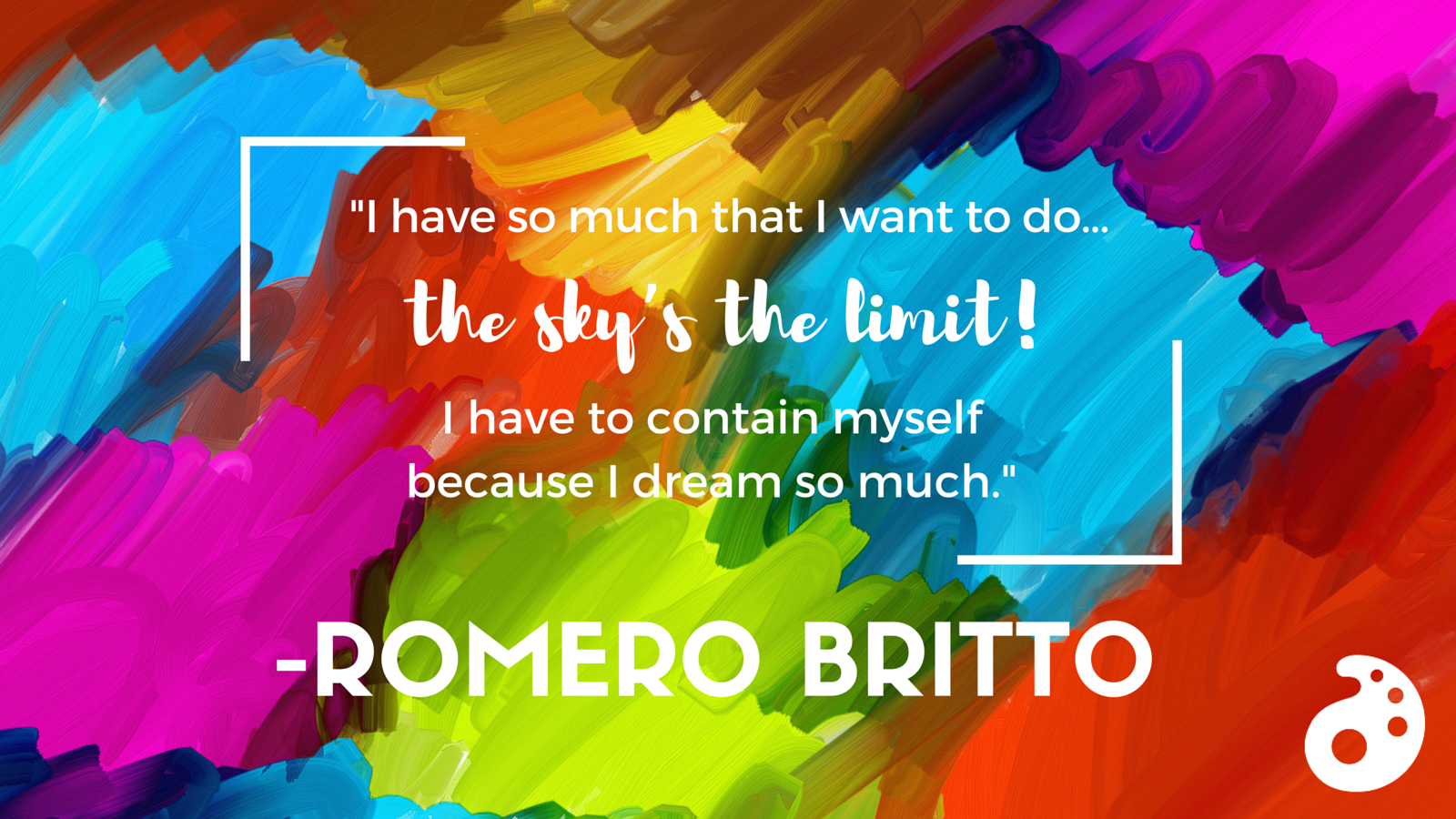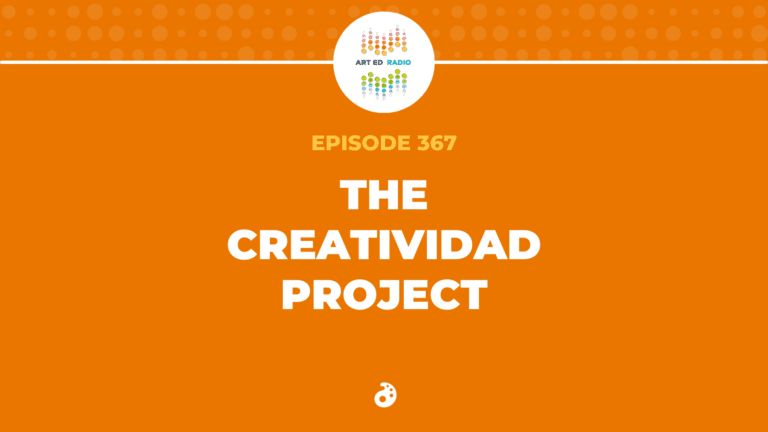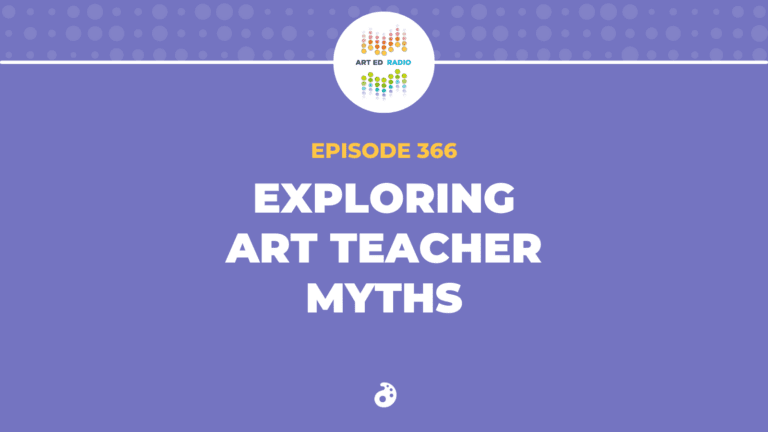Contemporary pop artist Romero Britto comes on the show to talk to Tim about his life and his work. Britto is known around the world for his colorful, bold, and optimistic artworks drawing inspiration from the joys of everyday life. He believes in art as an agent of positive change, and he and Tim discuss why this positive approach is so important. Britto also talks about his upbringing in Brazil (4:00), his biggest influences (11:15), a day in the life of an artist (15:00), and what he has coming next in his career (17:00). Full episode transcript below.
Resources and Links:
- Take a moment to look at Romero Britto’s website and read a more in-depth biography.
- If you are interested in hearing more from Britto, make sure you register for Art Ed Now, where he will be a featured presenter!
- Here are a few articles from AOE to keep that positivity going!
Spreading Positivity One Sticky Note at a Time
5 Powerful Tips to Stay Perfectly Positive at Work
Positivity Notes

Transcript
Welcome to Art Ed Radio, the podcast for art teachers. This show is produced by the Art of Education, and I’m your host, Tim Bogatz.
So much of what we do in the art room, you come back to one thing: wanting our students to have a positive experience with art. We praise art for its ability to empower our students and how it allows our students to express themselves in a positive way, and how it could become an agent for social change. Today we’re going to talk to an artist whose work and whose life embodies all of these qualities. World-famous pop artist, Romero Britto.
He’ll be on in just a little while and I will ask him about his upbringing in Brazil, his inspirations as an artist, his everyday life and his Miami studio, and most importantly, the power of art to affect positive change. To begin with, I’m really excited to do this interview for obvious reasons. This opportunity actually came about because Romero Britto will be a featured presenter at the Art Ed Now Online Summer Conference, and as part of that he agreed to come on the podcast.
This interview will give you a little bit from him, but if you really want to see what he’s all about, make sure you sign to see him at Art Ed Now. The conference is Thursday, July 14th, and you can find the details and sign up at artednow.com. For those of you that aren’t as familiar with Romero Britto, let me give you a little bit of background. He’s from Brazil, he’s part of a huge family, and he grew up making drawings and paintings on any surface he could get his hands on. He studied in Europe for a little while and really started to make it big with his art in the late 1980’s.
He set up his studio in Miami and has been working from there ever since. He’s world-famous and his art has some unmistakable qualities. It’s very modern, it’s very bold and it’s very colorful. In fact, if you don’t know his stuff do me a favor. Hit the pause button right now and go look him up. Seriously, go do it, because first, you actually probably have seen his work before. I mean seriously, it’s everywhere. Secondly, the interview is going to make a lot more sense when you can visualize the work that he’s describing and that he’s talking about.
He’s worked with Volvo, Audi, Pepsi, he’s done the Superbowl half time show. He designed a poster for the 2010 World Cup. His work is ubiquitous and there’s a lot of great stuff to see. On a personal note, I love Britto’s work for a couple of reasons. First of all, he’s got this great mishmash of styles. A lot of people would call it or consider it pop, but I would say it’s more of a neo pop. He infuses these elements of Cubism to create this really distinct look. It’s bold, it’s audacious, the colors and the patterns that he uses, absolutely demand your attention.
At the same time there’s this level of simplicity there that makes his work easily accessible. For that reason, a lot of art teachers gravitate toward his work. He’s an awesome artist to show to our students because his work introduces so many concepts and the optimism that shines through in his work is something that most of our kids respond really well to. Honestly, you don’t need to hear about it from me when you can hear about it from the artist himself. Romero Britto is here and he is ready to go. Let’s get this interview started.
I’m here with Romero Britto, world-famous artist and we’re very excited to talk to him. Thank you for joining us. How are you today?
Romero: Very well. Thank you so much. Everything is good. I’m here in Miami, it’s beautiful and very warm. It’s good.
Tim: That’s awesome. For those of our listeners that aren’t as familiar with your story, can you talk just a little bit about how you became an artist and kind of your journey to where you are today?
Romero: I was born in Brazil and grew up in a family with nine … We were nine basically. I was the youngest one, and single mother, and very challenging. Basically, growing up in Brazil and the situation I grew up really gave me strength to do what I do today, being creative. I don’t think I’ll be able to do what I do today if I didn’t have such a hard time when I was growing up. At the same time I had moments that was really fun. Going to the beach because I did live not far from the beach, and there was animals around my house because my brothers all like dogs, cats, and horse or chicken, things like that. It was very interesting. It was these ups and downs. There was good moments and bad moments.
Tim: What inspired you to start creating art? What was the first thing that really got you creating?
Romero: Growing up, usually kids they love drawings. I love doing drawings. I used to do drawing in everything in everything I put my hands on like notebooks, books from the school. At time that my mother used to tell me don’t do so many drawings in the notebooks because there’s no more money to be buying notebooks. Cardboard, anything I could do in. There was a time that I could buy brushes, I did paintings with them. I did finger paint. I’ve done so many. Even today, anything the studio that I can do, recycle, I do recycle from bags, from shopping. I’ve done art with shopping bags, like all kind of stuff. There’s so many things out there, you don’t need just to paint on canvass or sculpt in a marble. There’s all kinds of thing that you can create art with just out there.
Tim: That’s very true, very cool. Being such a famous artist I know you’ve had the ability to do all sorts of different works, all sorts of collaborations. I know you believe in the ability of the arts to be kind of an agent for change, for a positive change. What are some of your favorite partnerships, or events, or charitable work that you’ve done.
Romero: I agree with you that art can really be an agent of change, it can be inspiring, it can put people together. I myself, I’m being so blessed because I have this gift that I can create art and I can help people through my art or put people together, or work with charities, brighten up a day of a person or family. So many families they get together to come to see my studio, to come to see my art, to go to exhibition, travel sometime with me far away to come to my shows, be part of my career. It’s unbelievable. It’s been like a real amazing opportunity for me to be able to do what I do everyday.
Tim: When you’re doing those sorts of things, why do you think that stuff is important? Do you have a mission as an artist? Something that you want to try and accomplish with your work?
Romero: I definitely want to create images of hope and happiness, and love. I definitely want to be the kind of person that come to this world to add but not to take and disturb. I think that’s my mission. I’m very honored that I had this opportunity to do this and have the support of so many people. Have an opportunity to be alive, walk and talk, and be able to see and hear, and they end up creating trouble to others, to society, to make other people unhappy and hurting people, it’s not good. Definitely my mission is to create image of hope and happiness, and share my art with everybody.
Tim: I really like that. Speaking on that idea of positivity. Do you have a particular work or particular set of works that you really think shows that message of positivity or things that you are really proud of specifically?
Romero: Sometimes you can be very direct and sometimes it can be for the colors and the shapes. I think very important is to have as much color as possible in the painting. You can show happiness with a painting that’s all yellow. Immediately if you go to a room, it’s all yellow room. I did have some other pieces like a new day. A new day is like a new day that you start, and it has hearts, and flowers, and green fields. Everything is special and beautiful, that’s almost like magical world which is out there as well. I express myself in a painting. It’s only if for you to see it for you to understand a painting.
Basically, my work is very direct, colorful and fun, and I don’t talk about anything that’s negative that the media is talking about out there. I definitely don’t want to be a reporter of bad news or horrible things. I definitely hope that when somebody see one of my painting they get excited, they get happy, they feel good. When they think about my art they’re going to have good memories not bad memories, or nightmares.
Tim: Just staying on that same theme, you take that inspiration from positivity and everyday life and trying to spread that positive message. As you’ve been doing this for your entire life, you’ve been creating work your whole life, what do you do to keep things fresh on a daily basis besides positivity? What are some of the other inspirations you have?
Romero: The world is out there, there’s millions of things that you can see and that I see, and I get excited and inspired. There’s so much. There’s millions of things, trillions of things that’s out there done already from nature and from people, cities around the world, architecture, all kinds of stuff. It’s just unbelievable, the amount of things out there already that is inspiring. I think one thing is very important is to have your feet on the ground, because once you do that it’s much easier for you to see it, because once you lose yourself it’s kind of hard for you to get inspired and for you to see things that’s so close to and it can be so inspiring to you.
Tim: Along with that, do have any artist, heroes or artist that have inspired you, that make you want to create work?
Romero: Yes, definitely. I admire from artist from the Renaissance to modern masters like Picasso, Matisse, Mondrian, van Gogh. There’s so many artist out there that I love. American artist like Andy Warhol, Keith Haring, Jasper Johns. It’s amazing artists, that pop artist, that fun art and that was very inclusive. I definitely like the idea of including people not excluding. A lot of time artist or people in the arts they talk about being exclusive in like selling a bag or pair of shoes, like a fashion house, but the idea for me and my art is about inclusion not exclusion. That’s the thought. I have several artists that I love. Also today I collect. I have a piece of Frank Stella, I have Andy Warhol, I have Keith Haring, I have Roy Lichtenstein. I have drawing of Picasso. I love collecting art. I have more than 500 piece of art.
Tim: Can you talk a little bit about being in Miami. I know you’ve been there for 25 years or so. What drew you to Miami originally and what do you love about living there and working there?
Romero: Going a little bit back, growing up in Brazil I wanted to be a diplomat, I wanted to travel the world. I end up spending one year in Europe, I was very lucky to spend one year in Europe. Then I came back to Brazil to continue my studies because I wanted to be a diplomat. When I went back and I was in law school, I was so miserable that I said, “You know what, this is not for me.” I never thought my art, it would take me to places. I say, “You know what, I’m just gonna try my art.” When I decided about trying my art, I said, “You know what, I’m gonna go back to Europe” because I thought Europe was a place with culture and everything.
A friend of mine was going to University of Miami and then I came here to visit a friend. I love the city so much. I went to Europe, and then being here, just knowing a little bit of Miami, a glimpse of America, Miami and New York. When I was in Europe I say to myself, “I want to be in a place that’s very dynamic and is very multicultural.” I love Miami, and I came back to Miami. I live here ever since. I have a house in New York and I travel the world. I’ve been in so many countries, but this place here is very inspiring. The sunshine yearlong, and the people from all over. You can have a vacation during the day, anytime if you want. Just driving around to see the water, it’s so refreshing, it’s so inspiring. I call Miami paradise.
Tim: That’s prefect. I feel like that city very much fits your personality and fits your art. It seems like it’s a good fit.
Romero: Thank you.
Tim: We have a lot of art teachers that listen to this show and I know they love to tell stories about artist and what they do and how they work. Can you tell us about what a typical day would be like for you as an artist? What do you do from when you get up until when you go to bed at night? What is a day in your life look like?
Romero: My day is very long because I want to do so much. I want to make as much as possible of my day. I wake up really early, and I take a shower, and then I march to the studio. I say march means I drive to the studio, and I start my day. I start my day usually very early. When I’m not traveling I come here so I could do as much as possible early in the morning before all my staff arrives. I have about 100 people that work in my studio. My studio is about 50,000 square feet, and there’s people all the time come and go, visitors, and things like that.
It’s not open to the public but we do have collectors and friends or people that we do business coming over here because this is where they come to meet with me. I have meetings and then I go out sometimes for lunches. At the end of the day I paint, of course through the whole day, meetings, painting, meetings, painting, it’s very mixed. Then I go for dinners in the evenings, we collectors. If not, I stay painting until very late and I go to sleep very late, I wake up very early, and then I do some exercise in the end of the day before I go out.
If I travel, like tomorrow I’m going to London. Usually my trips I try to do it very quick. I go to London tomorrow and I’d be back Saturday in the afternoon. I’ve done trips like just for a day or things like that, but when I come back I come straight down to the studio and I change my clothes. I have a closet here with clothes where I change clothes, shower and everything. I spend a lot of time here. If I don’t have a meeting or lunch, I spend the whole day in the studio. That’s why I love being here.
Tim: Very nice. Just one last question for you. Obviously you’ve had a ton of opportunities through your career. What projects do you have planned for the future? What’s next for you?
Romero: I have so many thing I wanted to do. There’s so much. The sky is the limit. I actually had to contain myself because I always want to do more, more, more. Sometimes I feel I’m related to Elizabeth Taylor because she’s always like more, more, more. So much I wanted to do. Definitely I want to share more of my art in public areas, public places, sculptures, different countries and different part of the world that I want to have more of my work. I do have sculptures in public areas in Asia, in several countries in Asia and Europe, but there is so much more that can be done and to share my work with the world. It’s just a matter of time.
I just signed a very special deal with a huge art collector in the world that has a museum in Mexico City and his name is Carlos Lam. I just did a very beautiful alliance with these group of companies and I’m going to share my work with a clothing lines and all kinds of stuff for the home that I’m going to be doing, and it’s going to be sold in different parts of the world as well. It’s great.
Tim: That sounds like a great opportunity and we will definitely look forward to seeing that. Thank you very much for joining me today, it was great to talk to you.
Romero: Me too, thank you so much. Whenever you’re in Miami come to visit the studio.
Tim: We will do that. Thanks a lot.
Romero: All right. Thanks. Bye.
Tim: That was a lot of fun. It’s definitely not everyday that you’re able to talk to someone that well-known in the world of art, so a big thank you to Romero Britto for coming on the show. Again, if you want to hear more from him, check out his feature presentation on July 14th at the Art Ed Now Online Conference. You can sign up at artednow.com.
I loved everything that he had to say about what inspired him to become an artist and what continues to inspire him. I really enjoyed hearing about his personal art collection and who’s some of his favorite artists are. It’s really cool to me to hear about those influence because it was exactly what I visualize. Think about it this way, if you were to look at Britto’s work, you would probably say he’s influenced by Keith Haring and Andy Warhol especially, plus Picasso, maybe Roy Lichtenstein, Jasper Johns. Guess what, he named every single one of those artist in the interview.
Seeing how art history plays out like that, just a conversation between artist overtime, it’s awesome to be able to watch art evolve. It’s that type of progression that can really help our students understand what we get so excited about when it comes to art. Britto is a great artist to introduce to your students. That art historical context is an important part of it of course, but more importantly, it’s all about what I said at the beginning of the show. It’s his approach that embodies that optimism and positivity. It can provide something really valuable to our students because it’s not just about the art, it’s about what the art can do.
That message of optimism and positive expression, if we allow our kids to embody that, if we allow our kids to embrace that, that’s going to empower our students for a long time to come.
Art Ed Radio was developed, produced and supported by the Art of Education, and audio engineering by Michael Crocker. Please subscribe to Art Ed Radio in iTunes or your favorite podcast app, and check out artedradio.com. Most importantly, when you’re there you can now enter your email address to sign up for the Art Ed Radio mailing list. We’re going to be hitting you up every week with some thoughts on the show, some other quick writings and recommendations for other podcasts, artworks or stories from around the world of art. Honestly, it’s going to be the best part of your week. Thanks for listening.
Magazine articles and podcasts are opinions of professional education contributors and do not necessarily represent the position of the Art of Education University (AOEU) or its academic offerings. Contributors use terms in the way they are most often talked about in the scope of their educational experiences.



